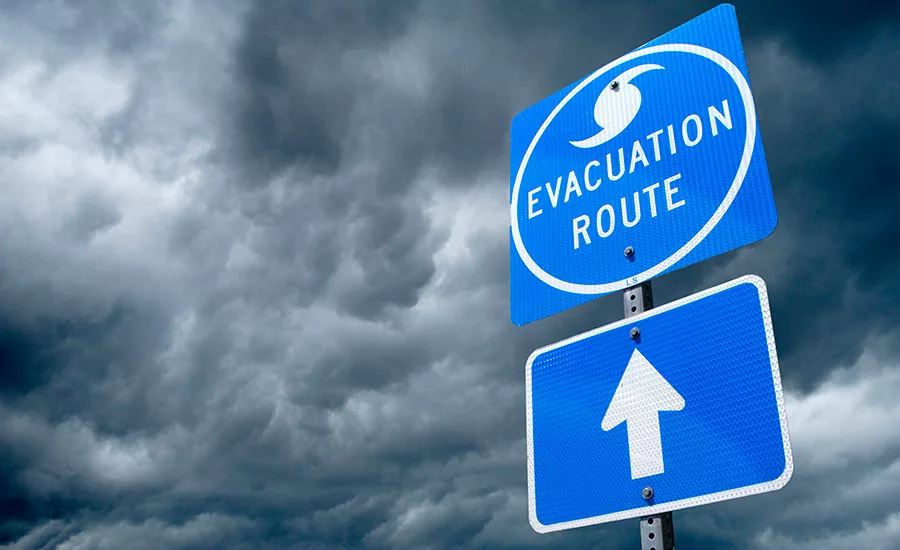Speeding up lockdowns and evacuations using mass notification

Evacuations and lockdowns are two events no organization wants to face, but every organization should be prepared for. They often happen in response to particularly dangerous situations that pose an immediate threat to people and property. It can be difficult to know how and when to make the decision to lockdown or evacuate, and it can be even more difficult to manage once the decision has been made. In either case, it requires organizations plan, test and have the right tools in place to reach all of their people quickly with information on what actions they should take to stay safe.
Lockdowns often occur in the event of a violent intruder. In these cases, it is often deemed too dangerous to evacuate as it may cause people to cross paths with the intruder, which could negatively impact their safety. Every organization is different, so how it handles a lockdown will be determined by the training and plans put in place by its leaders. Similarly, what kind of situations warrants an evacuation will need to be decided ahead of time. Most people think of fires when it comes to evacuations, but chemical spills, flash flooding and other dangerous situations may require a building to be emptied. Making decisions ahead of time and running drills so people know what actions to take will help organizations safely execute these plans. With the right tools in place, this can be made even easier.
Mass notification systems can help with both of these situations by enabling organizations to quickly trigger messages that alert people that they should lockdown or evacuate a facility. Messages and groups should be built in advance so leaders do not need to waste time during chaotic situations coming up with the language to clearly communicate the event taking place and what people should do to stay safe. Organizations will need to decide when it is appropriate to alert everyone and when only a select group should be notified to assess the situation before escalating notifications to a wider audience.
In either circumstance, it is essential that people are able to quickly trigger these kinds of alerts by making them easy to access. You cannot afford to have people waste time trying to remember logins or waiting to relay information to the right person who has authorization. Immediate threats require an immediate response. Within buildings this can be accomplished using physical panic buttons or virtual ones configured on a desk phone, or through computer keyboard shortcuts. By enabling a single-push system alerts can be sent out the instant a threat is identified. Mobile devices with a mass notification app can also be used so people can use a device they carry with them to trigger an alert, rather than relying on being at their desk or in front of a computer.
Once an alert is triggered, messages can be sent to a wide range of devices including other desk phones, IP speakers, desktop computers, digital signage and mobile devices as text and audio. By leveraging a variety of channels and message types, you are more likely to reach 100 percent of your intended audience so they can begin taking the necessary steps to leave a building or lockdown an area. It can also be sent to systems like door access controls to lock doors the moment a notification is triggered. This helps organizations reduce the number of steps they need to take to lockdown a building.
Mass notification systems can also help organization leaders manage ongoing lockdown and evacuation situations using collaboration tools like Microsoft Teams and Cisco Webex Teams. Once an alert is triggered, key stakeholders can be invited into virtual spaces where they can assess situations and determine next steps. Certain notifications can also be be connected to video surveillance systems to include a link to live video feeds from a camera in the area where an alert was triggered. This helps leaders have real-time insights into events as they unfold and can provide additional insight for first responders and people within the organization so they stay out of harms’ way.
If your organization chooses to evacuate, it should also have a reunification plan in place. Following an evacuation, there can be mass confusion among people within an organization and those outside of it. Social media, traditional media and word of mouth can all muddy the waters about the circumstances around an emergency event. One of the top concerns is typically if everyone is accounted for. This can be hard for organization leaders and law enforcement to determine if there is no set gathering area where people should evacuate. Without a reunification location, people are left to decide for themselves where they think they will be safe. This means they aren’t checking in with anyone to let them know they have gotten out of a building or area.
Organizations need to determine this location ahead of time as part of their emergency planning. Then that information can be included in an initial alert or follow-up so everyone ends up in the correct place once they leave your facilities. This is also important when friends and family members are trying to locate loved-ones and understand if they are okay. This prevents people entering dangerous areas and avoids disrupting law enforcement and first responders who are trying to secure a facility.
In this instance, mobile devices become particularly important as they can be used to check in on people using confirmation responses and polling. Messages can be sent with a simple question. This could ask if someone has reached the reunification area or if they still need assistance. In some cases, a response can trigger location tracking so organization leaders can understand where a person is and provide help as needed.
Mass notifications can also be used to communicate “all clear” messages. Evacuations and lockdowns can lead to large amounts of uncertainty as situations work be resolved. People need to know when it is safe to return to a building or when a lockdown has ended. With mass notification, you can reach all of your devices with the same message so no one is left in the dark on whether or not the danger has passed.
It’s worth reiterating that no crisis management plan is complete without regular testing and drilling. This starts with a tabletop exercise where different potential outcomes are game planned. This helps to identify different scenarios that may be problematic, such as a lockdown occurring while key personnel are offsite. Going one step further, live drills put real-world scenarios into play. For example, are all of the components that are integrated to the mass notification system functioning properly? Do people clearly understand what action is required of them? Of course, the degree to which a full-scale live lockdown drill is executed will be dependent on the situation. It’s easier to do this in a controlled corporate environment than an elementary school.
Creating plans and implementing tools in advance will help save headaches down the road. With a mass notification system, your organization can reach the right people quickly during an evacuation or lockdown so they can take the proper precautions to keep themselves safe.
Looking for a reprint of this article?
From high-res PDFs to custom plaques, order your copy today!







